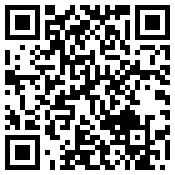Lab 6: Boggle
Deadline: 2019-10-10 10:10:10 pm.
Please compress your source code as lab6-STUDENTID.zip and upload it to
ftp://dmkaplony:public@public.sjtu.edu.cn:/upload/c++2019/lab6/ before the deadline.
The game of Boggle
The Boggle game board is a square grid onto which you randomly distribute a set of letter
cubes. The goal is to find words on the board by tracing a path through adjoining letters. Two
letters adjoin if they are next to each other horizontally, vertically, or diagonally. There are
up to eight letters adjoining a cube. Each cube can be used at most once in a word. In the
original version, all players work concurrently listing the words they find. When time is
called, duplicates are removed from the lists and the players receive points for their
remaining words.
Your assignment is to write a program that plays a fun, graphical rendition of this little
charmer, adapted for the human and computer to play pitted against one another. You’ll
quickly learn you have little hope of defeating the computer, but it’s awesome to realize you
wrote this program that can so soundly thrash you again and again!
This assignment will give you a little more practice as a class client, but the main focus is on
designing and implementing recursive algorithms. At the heart of the program are two
recursive functions that find words on the board, one for the human player and another for the
computer. Although each function is only a dozen lines of code, recursive algorithms can be
dense and tricky and will require your best recursion mojo to conquer. When you are done,
you will have earned the right to call yourself a journeyman in the way of recursion.
How’s this going to work?
You set up the letter cubes, shake them up, and lay them out on the board. The human player
gets to go first (nothing like trying to give yourself the advantage). The player enters words
one by one. After verifying that a word is legitimate, you highlight its letters on the board,
add it to the player’s word list, and award the player points according to the word’s length.
once the player has found as many words as he or she can, the computer takes a turn. The
computer searches through the board to find all the remaining words and awards itself points
for those words. The computer typically beats the player mercilessly, but the player is free to
try again and again, until finally ready to acknowledge the superiority of silicon.
The letter cubes
The letters in Boggle are not simply chosen at random. Instead, the letter cubes are designed
in such a way that common letters come up more often and it is easier to get a good mix of
vowels and consonants. To recreate this, we give an array of the cubes from the original
Boggle. Each cube is described using a string of 6 letters, as shown below:
const string BIG_BOGGLE_CUBES[25] = {
"AAAFRS", "AAEEEE", "AAFIRS", "ADENNN", "AEEEEM",
"AEEGMU", "AEGMNN", "AFIRSY", "BJKQXZ", "CCNSTW",
"CEIILT", "CEILPT", "CEIPST", "DDLNOR", "DDHNOT",
"DHHLOR", "DHLNOR", "EIIITT", "EMOTTT", "ENSSSU",
"FIPRSY", "GORRVW", "HIPRRY", "NOOTUW", "OOOTTU"
};
These strings are used to initialize the cubes on the board. At the beginning of each game,
“shake” the board cubes. There are two different random aspects to consider. First, the cubes
themselves need to be shuffled so that the same cube is not always in the same location on
the board. Second, a random side from each cube needs to be chosen to be the face-up letter.
To rearrange the cubes on the board, you should use the following shuffling algorithm,
presented here in pseudocode form:
Copy the constant array into a vector vec so you can modify it.
Shuffle vec using the following approach:
for (int i = 0; i < vec.size(); i++) {
Choose a random index r between i and the last element position, inclusive.
Swap the element at positions i and r.
}
Fill the Boggle grid by choosing the elements of vec in order.
This code makes sure that the cubes are arranged randomly in the grid. Choosing a random
side to put face-up is straightforward. Put these two together and you can shake the cubes into
many different board combinations.
Alternatively, the user can choose to enter a custom board configuration. In this case, you
still use your same board data structure. The only difference is where the letters come from.
The user enters a string of characters, representing the cubes from left to right, top to bottom.
Verify that this string is long enough to fill the board and re-prompt if it is too short. If it’s
too long, just ignore the ones you don’t need. You do not need to verify that the entered
characters are legal letters.
The human player’s turn
The human player enters each word she finds on the board. For each word, check that:
• It is at least four letters long.
• It is contained in the English lexicon.
• It has not already been included in the player’s word list (even if there is an alternate
path on the board to form the same word, the word is counted at most once).
• It can be formed on the board (i.e., it is composed of adjoining letters and each cube is
used at most once).
If any of these conditions fail, the word is rejected. If all is good, you add the word to the
player’s word list and score. In addition, you graphically show the word’s path by
temporarily highlighting its cubes on the board. The length of the word determines the
score: one point for a 4-letter word, two points for 5-letters, and so on.
The player enters a blank line when done finding words, which signals the end of the
human’s turn.
The computer’s turn
The computer then searches the entire board to find the remaining words missed by the
human player. The computer earns points for each word found that meets the requirements
(minimum length, contained in English lexicon, not already found, and can be formed on
board).
As with any exponential search algorithm, it is important to look for ways to limit the search
to ensure that the process can be completed in a reasonable time. One of the most important
Boggle strategies is to prune dead end searches. For example, if you have a path starting zx,
the lexicon’s containsPrefix member function will inform you that there are no English
words down that path. Thus, you should stop right here and move on to more promising
combinations. If you miss this optimization, you’ll find yourself taking long coffee breaks
while the computer is futilely looking for words like zxgub, zxaep, etc. Even though you may
love coffee, this is obviously not the best idea.
Our provided resources
We provided an EnglishWords.txt file containing over 125,000 words, which is about four
times as large as the average person’s vocabulary, so it’s no wonder that the computer player
is so hard to beat!
Solution strategies
In a project of this complexity, it is important that you get an early start and work
consistently toward your goal. To be sure that you’re making progress, it also helps to divide
up the work into manageable pieces, each of which has identifiable milestones. Here’s a
suggested plan of attack that breaks the problem down into the following five phases:
• Task 1—Cube setup, board drawing, cube shaking. Design your data structure for the
cubes and board. It will help to group related data into sensible structures rather than
pass a dozen parameters around. As usual, no global variables. Set up and shuffle the
cubes. You need to use a 5x5 board configuration.
• Task 2—Human’s turn (except for finding words on the board). Write the loop that
allows the user to enter words. Reject words that have already been entered or that don’t
meet the minimum word length or that aren’t in the lexicon. Add words to the graphical
display and keep score.
• Task 3—Find a given word on the board. Now put your recursive talents to work in
verifying that a word can be formed on the board, subject to the adjacency and nonduplication
rules. You will employ recursive backtracking that “fails fast”: as soon as
you realize you can’t form the word starting at a position, you move on to the next
position. If a path is found, highlight the cubes that form the word.
• Task 4—Find all the words on the board (computer’s turn). Now it’s time to implement
the killer computer player. Employing the power of recursion, your computer player
traverses the board using an exhaustive search to find all remaining words. Be sure to use
the lexicon prefix search to abandon searches down dead-end paths.
• Task 5—Loop to play many games, add polish. once you can successfully play one
game, it’s a snap to play many. With everything now working, it’s time to finish off the
details. Be sure to gracefully handle all user input. Make sure your comments are
thoughtful and complete. Pat yourself on the back and go eat some ice cream!
• Task 6—Make the Q a useful letter. Because the Q is largely useless unless it is adjacent
to a U, the commercial version of Boggle prints Qu together on a single face of the cube.
You use both letters together—a strategy that not only makes the Q more playable but
also allows you to increase your score because the combination counts as two letters.
• Task 7—Play by Mouse. Since we have prepared a graphical user interface, the player
could explore words by clicking on the board. Your program should track and highlight
which cubes have been clicked (and thus, selected) and their order. once the selected
cubes form a valid word that hasn’t been explored before, your program should award
the player and append the word to the player’s list. The selection and highlight should be
cleared if 1) a word has been added to the player’s list; or 2) the current selected cubes
cannot form any word
Requirements and suggestions
Here are a few details about our expectations for your solutions:
• Words should be considered case-insensitively: PEACE is the same as peace.
• The program contains two recursive searches: one to find a specific word entered by
the human player and another to search the board exhaustively for the computer’s
turn. They are somewhat similar, and you may be tempted to try to integrate the two
into one combined function. In general, we applaud this instinct to unify similar code.
However, we need to tell you that it doesn’t play out well in this case. There are
enough differences between the two that they don’t combine cleanly and the unified
code is actually made worse, not better, as a result. Given the tricky nature of
recursion, you should focus on writing exceptionally clean code that clearly
communicates its algorithm and thus can be easily maintained and debugged. An
important goal for this assignment is that you to learn how to employ these two
different varieties of recursion into the context of a larger program, and we expect you
to do so by writing two separate recursive searches.
• Our solution is about 250 lines of code (not counting comments) and is decomposed
into about 30 functions.
A little more challenge: for fun but not profit
Boggle has many opportunities for extension. You could consider the following extensions.
• Board exploration. As you will learn, some Boggle boards are a lot more fruitful that
others. Write some code to discover things about the possible boards. Is there an
arrangement of the standard cubes that produces a board containing no words? What
about an arrangement that produces a longest word, maybe even using all the cubes?
What is the highest-scoring board you can construct? Recursion will be handy in
trying out all the possible arrangements, but there are a lot of options (do the math on
all the permutations . . .), so you may need to come up with some heuristics to direct
your explorations.
因为专业,所以值得信赖。如有需要,请加QQ:99515681或邮箱:99515681@qq.com
微信:codehelp










